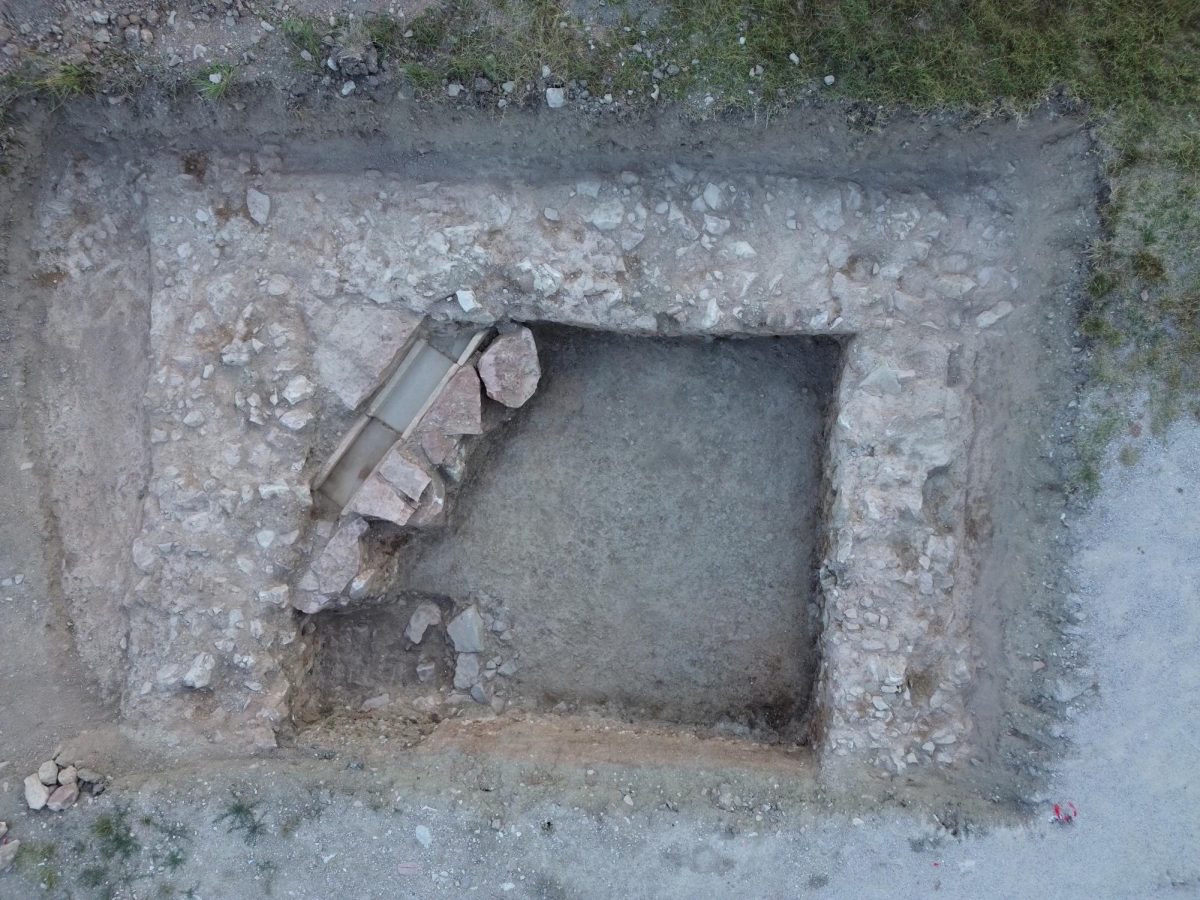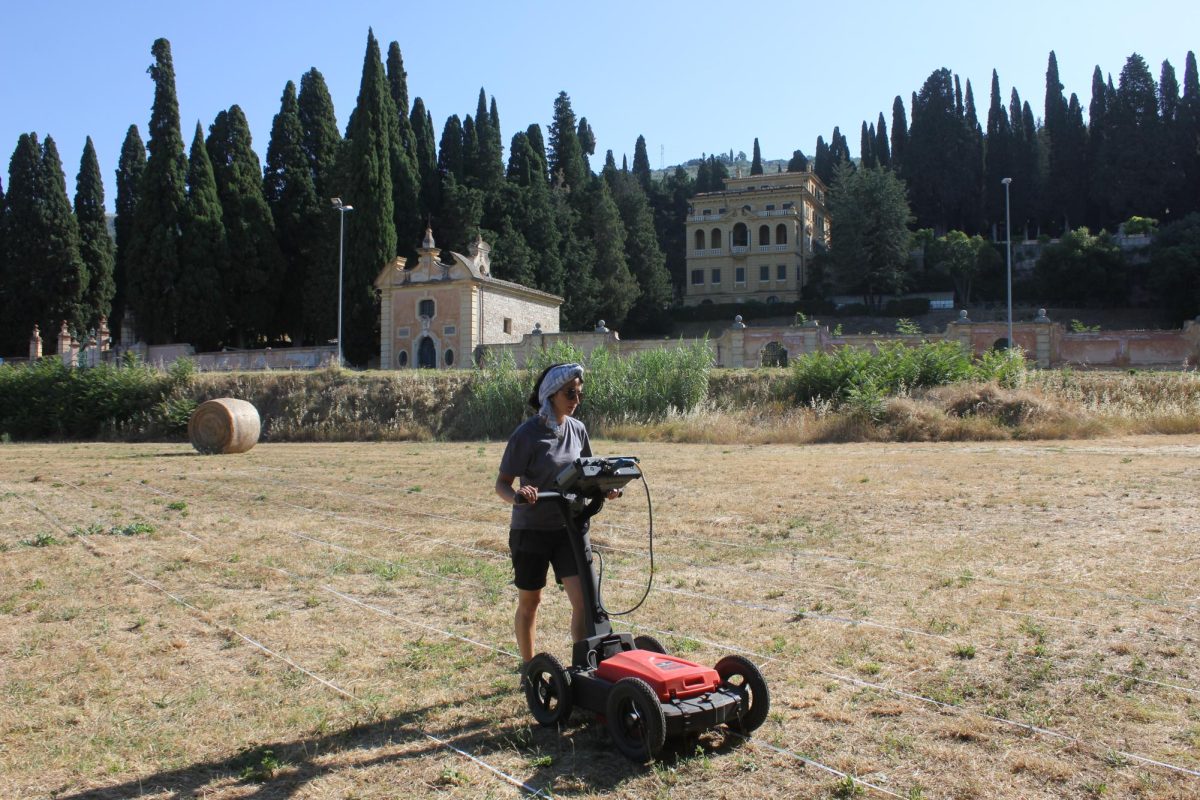A team in Italy led by Douglas Boin, a professor in Saint Louis University’s History Department, excavated three walls belonging to an Ancient Roman Cult Temple in the summer of 2023, a discovery with major implications for our understanding of Roman History.
Through geophysical scanning, a technological process that can model sub-terrestrial materials, his team had initially discovered a structure near an already-excavated religious site within the city’s bounds.
Based on a Latin inscription enshrined in the Spello Town Hall, Boin knew that there was a temple in the area endorsed by Constantine, the first Roman Emperor to convert to Christianity. However, depending on the thickness of the structure’s walls, which was not revealed through the geophysical scanning, the structure in question could have conceivably been a house (resembling those in Pompeii) or a number of similar Ancient Roman structures.
What Boin’s team found was, instead, a cult temple consecrated for the worship of Constantine which was, based on the Latin inscription, created with the Emperor’s own blessing.

(Photo by Luca Primavesi / Spello Project)
Boin, on the discovery’s implications for the field of Roman history, said that the revelation of the temple muddies the waters around understanding of Constantine’s role in the expansion of Christianity.
“It seems like just a mash-up of every possible cultural facet of Ancient Rome in one site,” Boin said. “I think it’s very important to continue to spotlight those moments in history when those overlaps and those gray areas did exist, because it just cuts against the grain of everything that we think we’ve been taught about how people’s sense of social or cultural change happens.”
These gray areas and overlaps are what drives Boin’s research expeditions. He notes that the transition between a Pagan and a Christian Roman Empire didn’t happen overnight and that the discovery of the temple provides vital information for interpreting and analyzing that historical period.
“What the archaeology shows us is that, outside of political arguing, people’s experiences maintained a lot of continuity with the places that they had come from, or the traditions that they had known,” Boin said “And a building like this, an imperial cult temple building like this, would have been a highly visible expression of Roman-ness.”
Further, the project necessitated the development of an extended relationship between SLU and Italian officials and researchers, a connection which will be vital in continuing Boin’s, and other, research endeavors.
In fact, the project was almost wholly funded by SLU sources and grants, and the project’s success, according to Fabien Montcher, a SLU professor with a focus on early modern and food history, said it is good news for SLU students and faculty pursuing interests in the humanities.
“I think it definitely puts us on the map of the broader academic world, but, also, I would say it gives [the University] more public exposure in relation to the very exciting research that’s being done in the humanities,” Montcher said.
Boin, according to his familiarity with SLU funding processes, was willing to speculate that this development has the potential to increase both future opportunities for faculty and students to participate in research projects and increase SLU’s willingness to fund research in the humanities.

This notion is furthered by the fact that Boin’s discovery is not the only successful project in recent SLU research. Tom Finan’s discovery of a medieval settlement off the coast of Ireland has begun to answer long-standing questions about the English Siege of the 13th century.
Montcher also noted that multiple new research centers have opened up at SLU, one of which, directed by Montcher, studies the history of the Iberian Peninsula during the First Globalization.
Due to these successes, the already present opportunities for both undergraduate and graduate level student research will increase. Montcher said that the most important thing for students who are interested in these opportunities is to remain engaged with their professors.
“Students have an opportunity to voice their interest in knowing more. [They have the opportunity] to say, ‘Okay, we want to know more about the research background of a professor’, because this is a research university, which is even moving toward a more research-heavy direction in the future. So, if the students are more closely associated with that, the more benefit they will get in their classes,” Montcher said.
As of now, the project is ongoing, said Boin, and much of the structure still needs to be excavated. While there are plans for a website dedicated to continuous updates on the development of the project, for now, these can be found on Instagram @SpelloProject.

